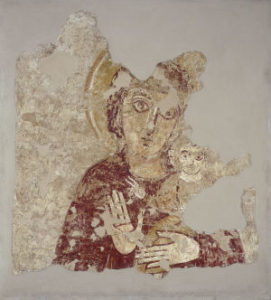
Thanks to the efforts of Polish archaeologists and a massive UNESCO-led international campaign, a unique assemblage of Nubian art and cultural artifacts from the Christian period (ca. mid-6th-14th centuries) was uncovered. Working under the direction of Prof Kazimierz Michałowski in the ancient city of Faras near the present-day Sudanese-Egyptian border, the team discovered well-preserved ruins of an 8th-century cathedral church. Its walls were decorated with magnificent mural paintings on religious themes, dating from the 8th-14th centuries. The discovery was hailed as the ‘miracle of Faras’. Over 120 paintings were preserved, 67 of which are today in the collection of the National Museum in Warsaw. This collection is accompanied by other finds from Faras. Together they form what is the largest and most valuable collection of archaeological artifacts from overseas excavations that has ever been acquired by a Polish museum.
Now, following an extensive redevelopment, the National Museum in Warsaw’s new Professor Kazimierz Michałowski Faras Gallery will open to the public on October 18, showcasing the finds. This makes the Faras Gallery home to Europe’s only display of Nubian art and cultural artifacts from the Christian period (ca. mid-6th-14th centuries). In a modern design, using multimedia presentations, including 3D film, it will present the most exquisite treasures of a civilization that developed some 1,500 years ago in what is today’s northern Sudan. The opening ceremony will be held under the patronage of UNESCO. It will also be the only place in the world outside Khartoum where paintings of Christian-era Nubian art are on view. The depictions of saints, archangels and Nubian bishops are originally from a cathedral church in Faras (formerly Pachoras), a city that was an important administrative and cultural center of the medieval African kingdom of Nobadia in the Nile Valley.
__________________________________
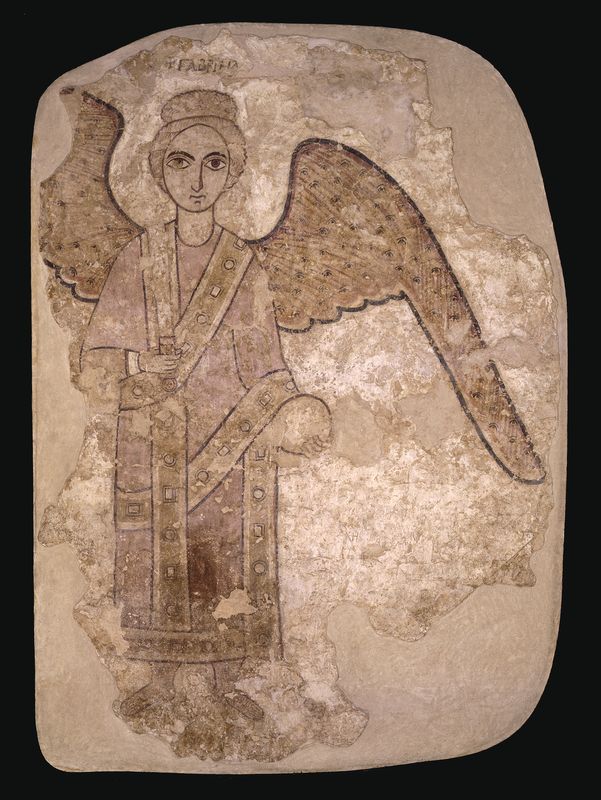 ARCHANGEL Sudan, Faras, 9th c. – 1st quarter of the 10th c. AD Mud plaster, tempera; From Polish excavations in Faras, in the National Museum in Warsaw since 1964
ARCHANGEL Sudan, Faras, 9th c. – 1st quarter of the 10th c. AD Mud plaster, tempera; From Polish excavations in Faras, in the National Museum in Warsaw since 1964
________________________________
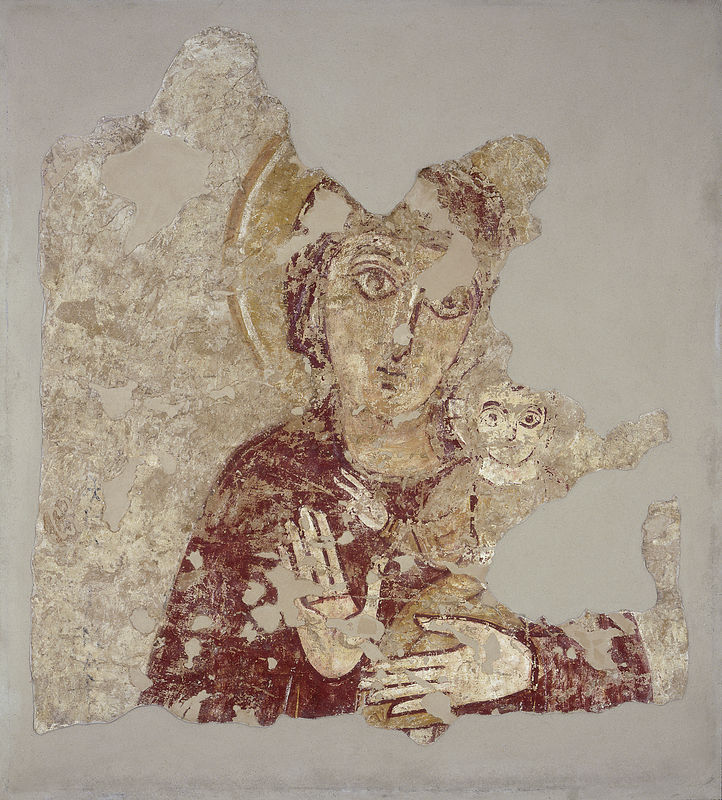 VIRGIN MARY WITH CHILD Sudan, Faras, 9th c. – 1st half of 10th c. AD Mud plaster, tempera; h. 146; w. 130.5 From Polish excavations in Faras, in the National Museum in Warsaw since 1964
VIRGIN MARY WITH CHILD Sudan, Faras, 9th c. – 1st half of 10th c. AD Mud plaster, tempera; h. 146; w. 130.5 From Polish excavations in Faras, in the National Museum in Warsaw since 1964
__________________________________
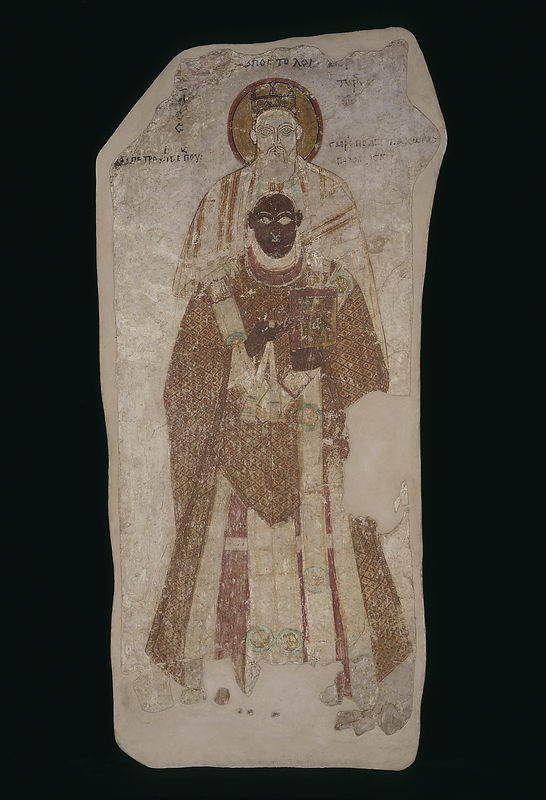 BISHOP PETROS WITH SAINT PETER Sudan, Faras, AD 974–997 Mud plaster, tempera; h. 244.5, w. 113 From Polish excavations in Faras, in the National Museum in Warsaw since 1964
BISHOP PETROS WITH SAINT PETER Sudan, Faras, AD 974–997 Mud plaster, tempera; h. 244.5, w. 113 From Polish excavations in Faras, in the National Museum in Warsaw since 1964
__________________________________
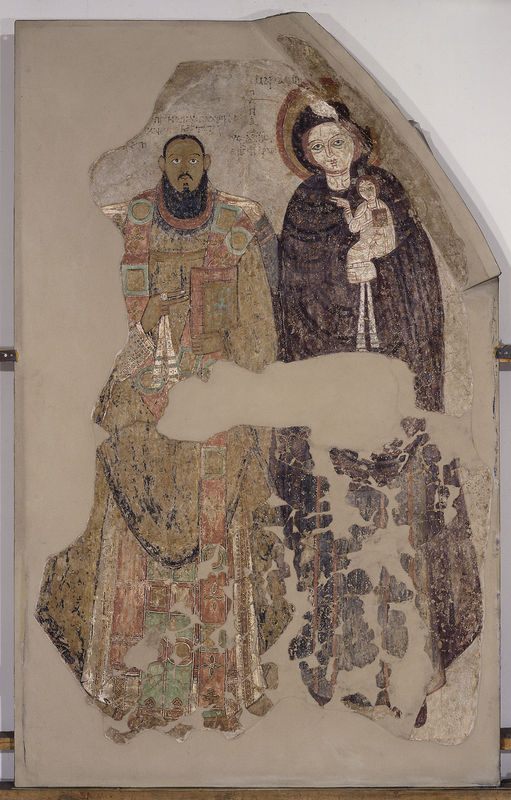 BISHOP MARIANOS WITH VIRGIN MARY WITH CHILD AND CHRIST Sudan, Faras, AD 1005–1036 Mud plaster, tempera; h. 247, w. 155.5 From Polish excavations in Faras, in the National Museum in Warsaw since 1964
BISHOP MARIANOS WITH VIRGIN MARY WITH CHILD AND CHRIST Sudan, Faras, AD 1005–1036 Mud plaster, tempera; h. 247, w. 155.5 From Polish excavations in Faras, in the National Museum in Warsaw since 1964
__________________________________
 FRAGMENTS OF THE FRIEZE FROM THE APSE OF THE FIRST CATHEDRAL Block decorated with relief representation of birds, altars and columns. Sudan, Faras, 1st quarter of the 7th c. AD Sandstone; h. 24, l. 41 From Polish excavations in Faras, in the National Museum in Warsaw since 1964
FRAGMENTS OF THE FRIEZE FROM THE APSE OF THE FIRST CATHEDRAL Block decorated with relief representation of birds, altars and columns. Sudan, Faras, 1st quarter of the 7th c. AD Sandstone; h. 24, l. 41 From Polish excavations in Faras, in the National Museum in Warsaw since 1964
The priceless works will be presented according to a new exhibition scenario. A room designed to evoke a temple interior will present the wall paintings in an arrangement similar to their original one at the Faras cathedral, with the sound of authentic Coptic liturgical chants heightening the experience for visitors. In a dedicated space, with special consideration for handicapped patrons, multimedia presentations will allow viewers to learn about the history of Christian Nubia, its architecture, the cathedral paintings and their interesting iconography. A digital reconstruction of the cathedral interior in 3D stereoscopy offers the first opportunity to enter a Nubian church in more than 1,000 years. State-of-the-art digital renderings will show the presbytery, the aisles, the chapels and the vestibule, explaining the original location of the paintings as they covered the church’s walls for centuries. The film shows not only works from the National Museum in Warsaw but also those kept at the National Museum of Sudan in Khartoum. The exhibition will be accompanied by presentations of archaeological films and archival photographs from the 1960s excavations.
“Our goal was to recreate, using simple and, in a way, timeless architectural solutions, the mood of the historical sacral interior of an early Christian temple. We were also keen to avoid literal references to the architecture of the Faras cathedral,” said Mirosław Orzechowski and Grzegorz Rytel, architects and authors of the new exhibition design.
So extensive a redevelopment would not have been possible without unprecedented support from a private individual – the Donor of the New Faras Gallery.
Just as with temporary exhibitions, the opening of the new Faras Gallery will be accompanied by an extensive program of educational events: Thursday evening meetings, family workshops, film screenings. Renowned archaeologists, lecturers, conservators and researchers will speak about the successes of Polish archaeology.
The Opening of the Faras Gallery is under UNESCO’s honorary patronage.
___________________________________________
The Nubian Campaign has become a strong symbol of UNESCO’s successful efforts to mobilize joint, high-profile international action for the protection of humanity’s common heritage. This Campaign led to the adoption of UNESCO’s World Heritage Convention in 1972 (Irina Bokova, Director-General of UNESCO).
Exhibition content concept: Bożena Mierzejewska, Collection of Ancient and Eastern Christian Art
Exhibition design: Mirosław Orzechowski, Grzegorz Rytel
Curator of Collection of Ancient and Eastern Christian Art: Alfred Twardecki
News source: Adapted and edited from a National Museum in Warsaw press release
___________________________________________
Travel and learn with Far Horizons.
______________________________________
Read about the most fascinating discoveries with a premium subscription to Popular Archaeology Magazine. Find out what Popular Archaeology Magazine is all about. AND MORE:
On the go? Get the smartphone version of Popular Archaeology as an app or as an ebook.
Popular Archaeology’s annual Discovery Edition eBook is a selection of the best stories published in Popular Archaeology Magazine in past issues, with an emphasis on some of the most significant, groundbreaking, or fascinating discoveries in the fields of archaeology and paleoanthropology and related fields. At least some of the articles have been updated or revised specifically for the Discovery edition. We can confidently say that there is no other single issue of an archaeology-related magazine, paper print or online, that contains as much major feature article content as this one. The latest issue, volume 2, has just been released. Go to the Discovery edition page for more information.







